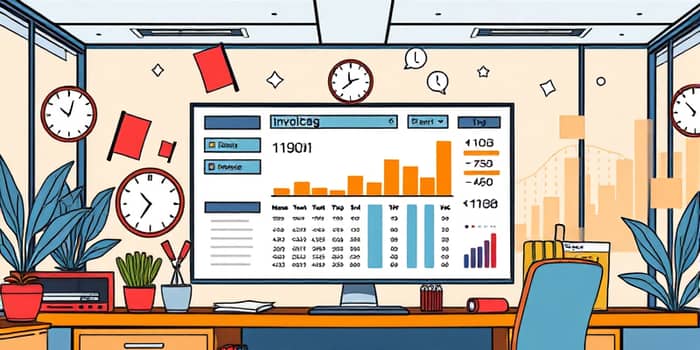
Identifying customers at risk of paying late is more art than science. While traditional metrics capture past performance, a deeper understanding of behavioral and subtle payment signals can give finance teams the edge they need to safeguard cash flow. By reading between the lines of customer interactions and combining those insights with cutting-edge analytics, businesses can move from reactive collections to proactive risk management.
Late payments create a ripple effect that can stall critical operations. When invoices arrive late, treasury teams must scramble to cover shortfalls, often tapping credit lines or delaying vendor payouts.
These interruptions mean extra fees, strained supplier relationships, and diverted staff time. In extreme cases, a string of late payments can force companies to postpone hires or capital investments.
Implementing systems that spot early warning signs is essential to maintaining healthy cash flow and to reduce manual reconciliation efforts. Predictive approaches help teams shift from chasing overdue invoices to guiding customers toward on-time settlement.
Traditional “hard” indicators focus on quantifiable payment history and financial ratios. They rely on past-due balances, days sales outstanding (DSO), and balance sheet health. While critical, these measures often signal risk only after a trend has become entrenched.
In contrast, soft indicators capture early, qualitative cues. They track shifts in communication tone, minor deviations in payment timing, and fluctuations in order behavior. Integrating both indicator types delivers more accurate and timely predictions, enabling businesses to head off problems before they escalate.
Soft indicators act like early-warning sirens. When interpreted correctly, they allow finance teams to intervene smoothly without damaging customer relationships. Following are the most impactful signals:
By tracking these behaviors through automated alerts, teams can reach out with tailored payment plans, verify process bottlenecks, or propose small discounts for early settlement. This personal touch often prevents minor delays from becoming major delinquencies.
Modern predictive platforms harness both hard and soft signals to forecast late payments with remarkable precision. These systems ingest historical payment logs, customer communication metadata, and external economic indicators.
Machine learning models—such as Random Forests and Gradient Boosting—can be trained to spot complex interplays between variables. When combined with advanced machine learning and statistical algorithms, the result is a dynamic risk score that updates with every new data point.
Systems like Microsoft Dynamics 365 assign confidence scores to predicted overdue invoices, flagging those most likely to slip. Organizations deploying these technologies report over 90% forecast accuracy and significant time savings in working capital management.
Beyond internal behaviors, macroeconomic indicators shape payment patterns. Metrics such as the Consumer Price Index, unemployment rates, and consumer confidence can trigger widespread shifts in payment habits.
Industry-specific cycles also matter. For instance, seasonal demand spikes may stretch approval workflows, leading to predictable payment lags. By blending global data feeds with real-time customer signals, finance teams can adjust forecasts dynamically, anticipating periods of stress before they strike.
During the COVID-19 pandemic, many companies found traditional economic signals less reliable. In contrast, real-time payment behavior emerged as a more direct gauge of risk. One major retailer integrated decline response data to boost payment acceptance by over 9% within weeks.
At Danone North America, combining operational payment logs with machine learning models improved cash flow forecasting and reduced days sales outstanding by two days on average.
These examples demonstrate how proactive use of payment behavior data can transform credit risk management from a background task into a strategic advantage.
To harness soft indicators effectively, finance teams should follow a structured implementation plan:
Late payments no longer have to be a surprise. By paying attention to subtle shifts in customer behaviors and leveraging modern analytics, businesses can forecast delinquencies well before they occur. This proactive approach not only protects cash flow but also strengthens customer partnerships, positioning companies for sustained growth in an increasingly uncertain world.
References













